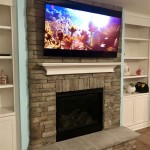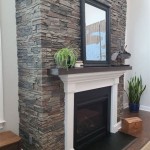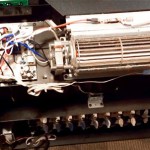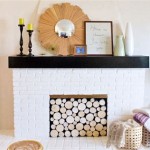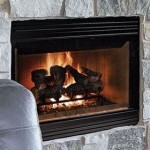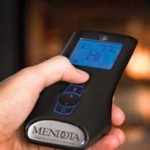Gas Fireplace In Wall: A Comprehensive Guide
A gas fireplace in wall, also known as a direct vent gas fireplace, offers a visually appealing and efficient heating solution for modern homes. Unlike traditional wood-burning fireplaces, in-wall gas fireplaces eliminate the need for chimneys or extensive construction. These units are designed to be installed directly into a wall, creating a seamless and contemporary aesthetic. This article will delve into the features, benefits, installation considerations, and maintenance requirements associated with gas fireplaces in wall.
The popularity of gas fireplaces in wall stems from their versatility and energy efficiency. They are available in a wide range of sizes, styles, and heat outputs, making them suitable for various room sizes and design preferences. Furthermore, gas fireplaces provide instant warmth at the flip of a switch or the press of a button on a remote control. This convenience contrasts sharply with the effort required to operate a wood-burning fireplace, which involves gathering wood, building a fire, and constantly monitoring its progress.
The direct vent technology used in most in-wall gas fireplaces ensures a safe and efficient operation. This technology utilizes a sealed combustion system that draws air from outside the home for combustion and vents exhaust gases directly outside through a coaxial or concentric venting system. This prevents combustion byproducts from entering the living space, improving indoor air quality and reducing the risk of carbon monoxide poisoning.
Key Point 1: Advantages of Gas Fireplaces In Wall
Several key advantages contribute to the appeal of gas fireplaces in wall:
Space Saving: In-wall fireplaces are designed to be compact and occupy minimal floor space. This is particularly beneficial for homes with limited square footage. By integrating the fireplace into the wall structure, valuable living space is preserved.
Ease of Use: Gas fireplaces offer unparalleled convenience. They ignite instantly with the flip of a switch or the press of a button. Many models come equipped with remote controls that allow users to adjust the flame height, heat output, and even program operating schedules. This eliminates the need for manual adjustments and provides a user-friendly experience.
Energy Efficiency: Modern gas fireplaces are designed to be highly efficient, converting a significant portion of the fuel into usable heat. Many models are equipped with features such as thermostatic controls and electronic ignition systems, which further optimize energy consumption. The direct vent system also contributes to efficiency by preventing heat loss through the chimney.
Aesthetic Appeal: In-wall gas fireplaces offer a wide range of design possibilities. They are available in various styles, from traditional log sets to contemporary glass media. The sleek and minimalist design of many in-wall models complements modern interior decor. The customizable flame presentation allows users to create a warm and inviting ambiance.
Improved Air Quality: Direct vent gas fireplaces are sealed combustion systems, meaning they draw air from outside the home for combustion and vent exhaust gases directly outside. This eliminates the release of harmful combustion byproducts into the living space, improving indoor air quality and reducing the risk of carbon monoxide poisoning, a significant advantage over wood-burning fireplaces.
Cleanliness: Unlike wood-burning fireplaces, gas fireplaces do not produce ash, soot, or creosote. This eliminates the need for regular cleaning and reduces the risk of chimney fires. The maintenance requirements for gas fireplaces are significantly lower than those for traditional fireplaces.
Safety: Direct vent gas fireplaces are equipped with safety features such as flame sensors and automatic shut-off valves. These features help prevent gas leaks and ensure safe operation. The sealed combustion system also minimizes the risk of carbon monoxide poisoning.
Key Point 2: Installation Considerations for Gas Fireplaces In Wall
Proper installation is crucial for the safe and efficient operation of a gas fireplace in wall. It is strongly recommended to hire a qualified and licensed professional for the installation process. Several factors must be considered during installation:
Location: The location of the fireplace will influence the overall design and functionality of the room. Factors to consider include the proximity to gas lines, the availability of venting options, and the structural integrity of the wall. It is important to select a location that is both visually appealing and practical.
Venting: Direct vent gas fireplaces require a dedicated venting system to exhaust combustion gases outside. The venting system can be either horizontal or vertical, depending on the location of the fireplace and the layout of the home. The venting system must be installed according to the manufacturer's instructions and local building codes.
Gas Line: A gas line must be installed to supply fuel to the fireplace. The gas line must be sized appropriately to provide sufficient gas flow for the fireplace. A qualified plumber should install the gas line according to local plumbing codes.
Framing: The wall must be framed to provide a secure and stable enclosure for the fireplace. The framing must be constructed according to the manufacturer's specifications and local building codes. The framing should also provide adequate clearance for the fireplace and venting system.
Clearances: Adequate clearances must be maintained around the fireplace to prevent overheating and fire hazards. The clearances will vary depending on the model of the fireplace and the materials used in the surrounding area. The manufacturer's instructions will specify the required clearances.
Electrical Connections: Some gas fireplaces require electrical connections for features such as electronic ignition, blowers, and remote controls. A qualified electrician should make the electrical connections according to local electrical codes.
Building Codes: All installations must comply with local building codes and regulations. It is the responsibility of the homeowner and the installer to ensure that the installation meets all applicable requirements. Permits may be required prior to beginning the installation.
Professional Installation: Due to the complexities of gas line connections, venting systems, and electrical wiring, professional installation is highly recommended. Licensed professionals possess the necessary expertise and experience to ensure a safe and code-compliant installation. This minimizes the risk of gas leaks, carbon monoxide poisoning, and other potential hazards.
Key Point 3: Maintenance and Safety of Gas Fireplaces In Wall
Regular maintenance is essential to ensure the safe and efficient operation of a gas fireplace in wall. A simple maintenance routine can significantly extend the lifespan of the unit and prevent costly repairs.
Annual Inspection: A qualified technician should inspect the fireplace annually. The inspection should include a check of the gas connections, venting system, burner assembly, and safety controls. This proactive measure can identify potential problems before they escalate into major issues.
Cleaning: The fireplace should be cleaned regularly to remove dust, debris, and soot. Use a soft brush or vacuum cleaner to clean the burner assembly and surrounding areas. Clean the glass front with a non-abrasive cleaner specifically designed for fireplace glass.
Venting System Inspection: The venting system should be inspected regularly for obstructions or damage. Birds' nests, leaves, and other debris can block the venting system, which can lead to carbon monoxide poisoning. Any blockage must be removed promptly.
Pilot Light Maintenance: Check the pilot light regularly to ensure it is burning properly. A weak or flickering pilot light may indicate a problem with the gas supply or the burner assembly. Consider having the pilot light professionally cleaned and adjusted for optimal performance.
Carbon Monoxide Detector: Install and maintain a carbon monoxide detector in the vicinity of the fireplace. Carbon monoxide is a colorless and odorless gas that can be deadly. The carbon monoxide detector will alert you to the presence of this gas.
Gas Leak Detection: If there is a strong smell of gas near the fireplace, the gas supply must be shut off immediately, and a qualified technician must be contacted. Avoid using any electrical devices that could create a spark, and evacuate the area.
Regular Burner Cleaning: Clean the burners regularly to ensure proper gas flow. A dirty burner can lead to inefficient combustion, reduced heat output, and potential safety hazards. Consult the manufacturer's instructions for specific cleaning procedures.
Check for Spiders and Insects: Spiders and insects can build nests and webs inside the fireplace, which can obstruct gas flow and create a fire hazard. Regularly inspect the fireplace for these pests and remove them as needed.
By adhering to these maintenance guidelines and prioritizing safety, homeowners can ensure the reliable and long-lasting performance of their gas fireplace in wall, providing warmth and ambiance for years to come.

7 Fireplace Surround Ideas That Will Ignite The Room

Fire Ribbon Direct Vent Slim Gas Fireplace Spark Modern Fires

5 Ideas For A Gas Fireplace In Your Interior

Napoleon Lv50n Vector 50 Direct Vent Gas Fireplace Home Remodel Indoor

SÓlas Twenty6 Wall Mount Direct Vent Gas Fireplace Toronto Home Comfort

Fireplace Xtrordinair 564 Trv 35k Gas Gallery Of Western Michigan

Vent Free Archives SÓlas Contemporary Fireplaces

The Downsides To Gas Fireplaces

Flatfire Wall Wittus Fire By Design

The Zero Clearance Fireplace Vs Ortal S Cool Wall Technology
Related Posts


